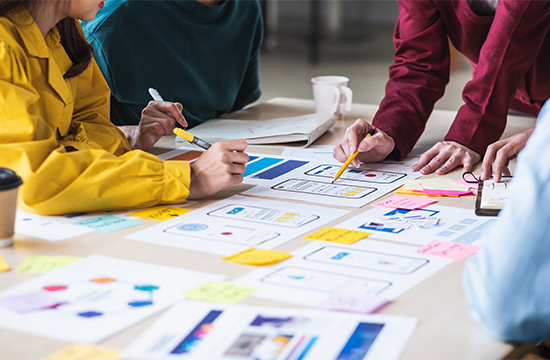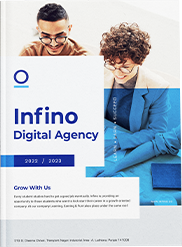
The process of creating a mobile apps are quite common and uncomplicated. Like any other software development project, it contains strategy, design, development, and deployment.
However, if you have never worked in software development before and decide to create an app for your company, you may find it tedious at times. Why are there so many steps in the design? Why do we have to test everything all of the time? After all, what are these iterations?
You will save time and have a better experience if you are familiar with the ins and outs of the app development process.
Following are the step by step process of a mobile app development:
1. Articulating the idea
Some entrepreneurs approach app development companies with a precise list of features they wish to have in their app and some come with the idea.
Whatever the situation may be, the primary focus from the start has been to understand everything we can about your app’s concept. Who will make use of it? What platform(s) do we develop for? Is there anything else in the niche that’s similar? What are the project’s business objectives? Do you have a plan for your marketing?
2. Researching about the targeted audience for your app
Your product plan will be more developed if you conduct thorough research. It aids in the reduction of mobile app development costs and the saving of a significant amount of time during the remainder of the development process.
The research include:
Learning about your target audience – Their expectations, challenges, preferences, habits, behavioral specifics, etc.
Knowing your competitors – It’s never a bad idea to look at what others have to offer in your field. We research the competition to learn how other businesses approach comparable problems, what technology they employ, and what services they offer. We figure out what they do well and what they could do better. This study aids in the comprehension of the market and the identification of chances for competitive advantage.
Learning about the basics app technologies – You are able to make an informed decision when you have known about the app technologies, their benefits and cost. This will allow us to select the best tech stack for your mobile applications and develop mobile experiences that are in line with your brand’s identity.
3. UX Design
The most exciting aspect of the mobile app development lifecycle is undoubtedly user experience design, because it provides you with the first peek of how your app will appear and function. This step determines how users will interact with the system and experience the application.
UX design is a multi-step process in and of itself. The App Development Company will give you the rundown on it.
4. UI Designing
The final step in the design process is UI design. But don’t be shocked if we need to return to the mock-ups later in development and testing to make some changes. The benefit of using an iterative development method is that we can test our assumptions and design concepts and make changes based on early feedback long before the product reaches end users.
5. App Development and Testing
The longest step is development. It is, fortunately, also the most enjoyable phase of the process. Mostly because you’ll be able to test your application for the first time. But also because you can keep a close eye on how it develops and try out beta versions every now and again.
The next phase in the app development cycle begins with the development team receiving the completed and approved UI design. This transition must go smoothly, and designers and developers must be able to communicate and clarify specifics before coding begins. After all, the development team’s job isn’t only to create working software; it’s also to make it pixel-perfect and interesting.
6. Releasing of the App
This is where you will submit your software for approval to the App Store or Play Store. You will repeat this process whenever you release a new version of your app, so it is very important that you master it. In this phase of development, you should have eliminated most of the significant defects reported by your testers, and your app should meet store requirements.
Congratulations. Your app is now open to the general audience. However, your work isn’t done yet. You effectively return to the prototyping stage after publishing your software. You’ll be assessing customer feedback, possibly adding new features, and then re-releasing the app. These five processes will be repeated, allowing you to fine-tune your offering to your target market over time.
Now you are ready to market your product. Prior to this stage, you should have planned and developed marketing strategies and social media initiatives that will help your app get noticed in the wild.
7. Optimizing and monitoring
It’s critical to track your app’s performance after launch, read user reviews, and perhaps even communicate with users to determine if there are any usability concerns. Real user input is unrivaled.
You can establish specific KPIs and use app analytics tools to track them depending on your objectives. After a while, you’ll have a good amount of feedback that can assist you design your app optimization plan.
Final Thoughts
In this article, we hope you have gained a better understanding of the mobile app development process and its various stages, which range from selecting a partner to learning about the various stages of App Development and its maintenance. By incorporating the best AI tools into your development toolkit, you can enhance efficiency and innovation, ensuring that you create a product with a perfect market fit. If you follow the methods indicated in this book, you’ll be well-equipped to navigate the dynamic landscape of mobile app development and deliver a successful product to your audience.
Also Read: F95Zone: Ultimate Guide With Top Games List.







 Download Our Brochure
Download Our Brochure